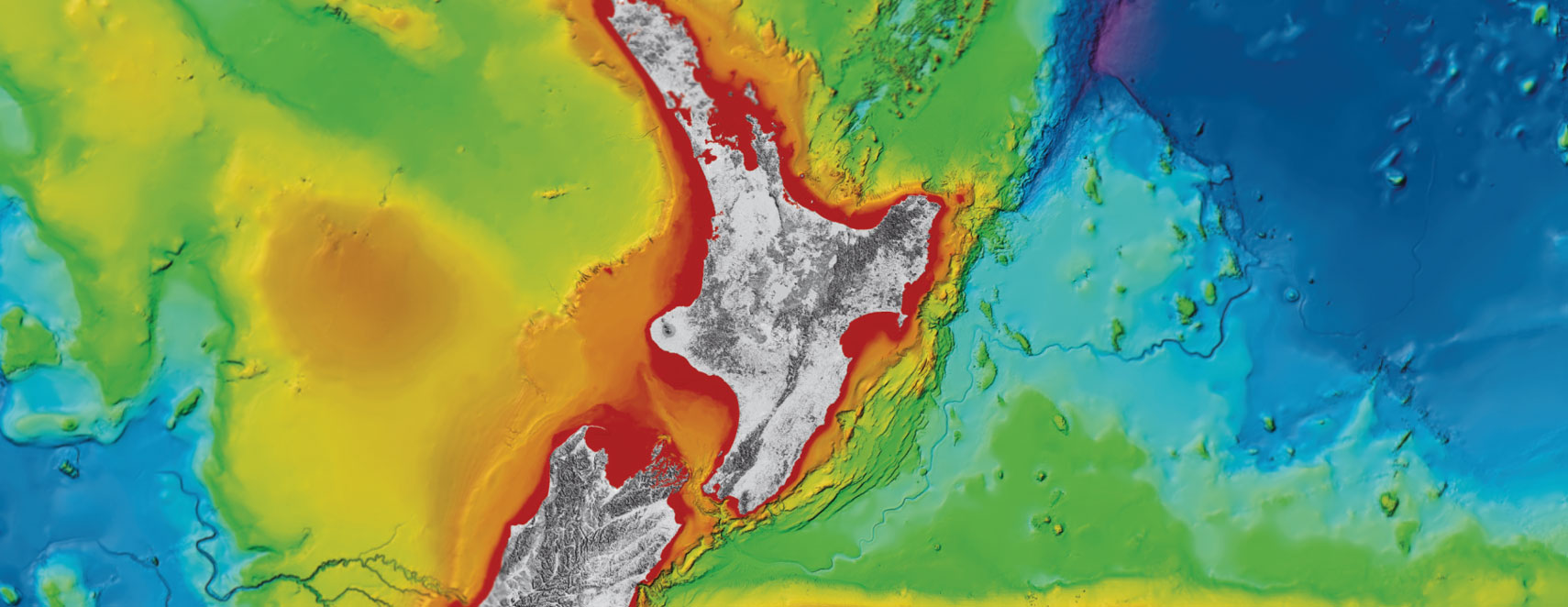
New Zealand’s first offshore observatories are now recording from inside our largest fault

Two world-class subseafloor observatories are now operating at the northern Hikurangi subduction zone where the Pacific Plate dives beneath the North Island, thanks to an international team of earth scientists and engineers.
The observatories were funded by the United States National Science Foundation, and are intended to monitor a phenomenon called ‘slow-slip events’ or ‘silent earthquakes’ that commonly occur on the tectonic plate boundary off the coast of Gisborne.
One of the observatories is named ‘Te Matakite’ which means ‘to see into the future’. As the name implies, it will sense and measure changes in the fault zone that human eyes cannot see or record in any other way. It was named by students at Gisborne Boys’ High School.
This information will provide important new insights into why the subduction zone is behaving as it is, and improve understanding of hazards posed to the East Coast by earthquakes and tsunami.
‘Te Matakite’ is not the only observatory in the world at a subduction plate boundary, but it is a first for New Zealand. And because of its nested design, with three packages of instruments lowered inside each other, it is one of the most complex that has ever been built.
‘Te Matakite’ was installed 450 metres below the seafloor into a major active fault that splits off from the main Hikurangi megathrust fault. The site was chosen due to its accessibility by the scientific drilling ship JOIDES Resolution.
Research into slow-slip events has also pinpointed this thrust fault site as one where these silent earthquakes might be propagating up to the seafloor, so the scientists chose to position the observatory instruments below, within and above the fault.
Expedition co-leader, Dr Demian Saffer of Pennsylvania State University said, “Observatories are notoriously difficult to install, due to the deep-water depths and tools required, but we are thrilled both were deployed successfully over the two-month voyage.”
“The observatories will be able to detect tiny changes in the rock and sediment surrounding the subduction fault and provide clues about how and where stress is building or being relieved.”
Both observatories will listen to the ‘creaks and groans’ of the subduction zone and are the primary method scientists have of being able to continuously collect this data over many years, directly from the source of the slow-slip events.
Dr Saffer said the purpose of the observatories was to “test a broad range of questions we have about slow-slip events, and their relationship to large, destructive earthquakes and tsunamis.”
Dr Laura Wallace, expedition co-leader from GNS Science, hoped the observatories “will pave the way to additional long-term measuring equipment being installed in the Hikurangi subduction zone, which could also contribute to improved tsunami warning in the future.”
As slow-slip events happen quite regularly (at least once a year) the observatories should be able to sense and record at least a few cycles of these enigmatic, slow earthquakes over the next several years.
Within five years scientists will return to both observatory sites with another scientific research ship to retrieve the data using a robotic submarine, or ROV (Remotely Operated Vehicle). The ROV will connect to instruments at the wellhead with a cable to download the pressure data and send it back to a computer on the ship. Scientists will also use a winch to retrieve the delicate temperature and fluid sampling packages inside ‘Te Matakite’.
“The puzzle we are putting together on the JOIDES Resolution will help subduction zone scientists all around the world understand earthquakes and the slow-slip phenomenon better,” says Dr Wallace.
“And for people living near subduction zones, it will be used to improve hazard and risk models of earthquakes and tsunamis. Better understanding of what could happen will lead to improved preparedness and fewer lives lost.”
New Zealand participates in IODP through a consortium of research organisations and universities in Australia and New Zealand, including GNS Science, NIWA, The University of Auckland, Victoria University of Wellington, and University of Otago. The Australia and New Zealand IODP Consortium (ANZIC) supports participation of New Zealand scientists and outreach officers on these voyages. The scientific drilling ship JOIDES Resolution is funded by the US National Science Foundation.
Disclaimers and Copyright
While every endeavour has been taken by the East Coast Lab Hikurangi Subduction Zone M9 to ensure that the information on this website is
accurate and up to date, East Coast Lab Hikurangi Subduction Zone M9 shall not be liable for any loss suffered through the use, directly or indirectly, of information on this website. Information contained has been assembled in good faith.
Some of the information available in this site is from the New Zealand Public domain and supplied by relevant
government agencies. East Coast Lab Hikurangi Subduction Zone M9 cannot accept any liability for its accuracy or content.
Portions of the information and material on this site, including data, pages, documents, online
graphics and images are protected by copyright, unless specifically notified to the contrary. Externally sourced
information or material is copyright to the respective provider.
© East Coast Lab Hikurangi Subduction Zone M9 - www.eastcoastlab.org.nz / +64 6 835 9200 / info@eastcoastlab.org.nz
